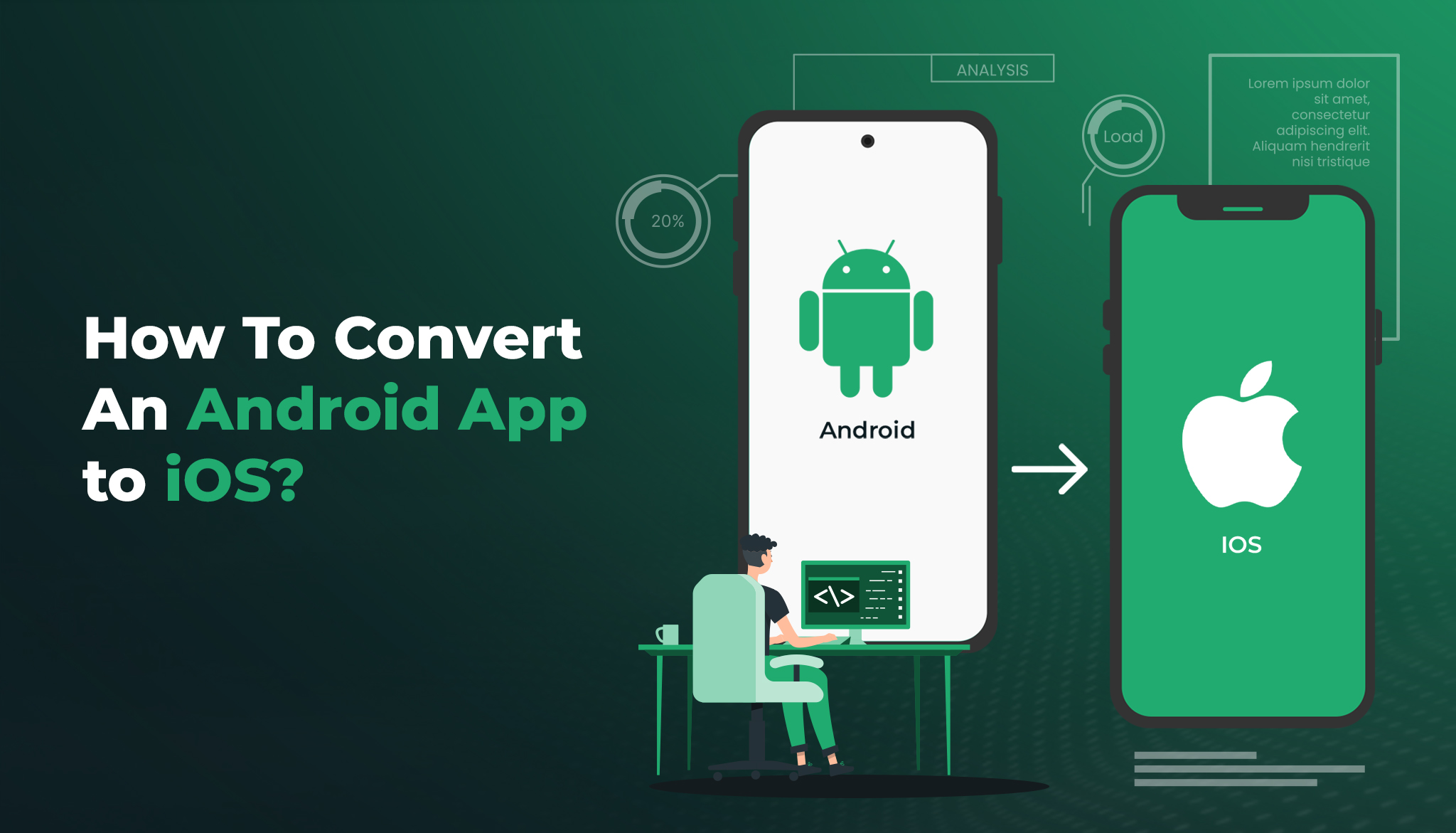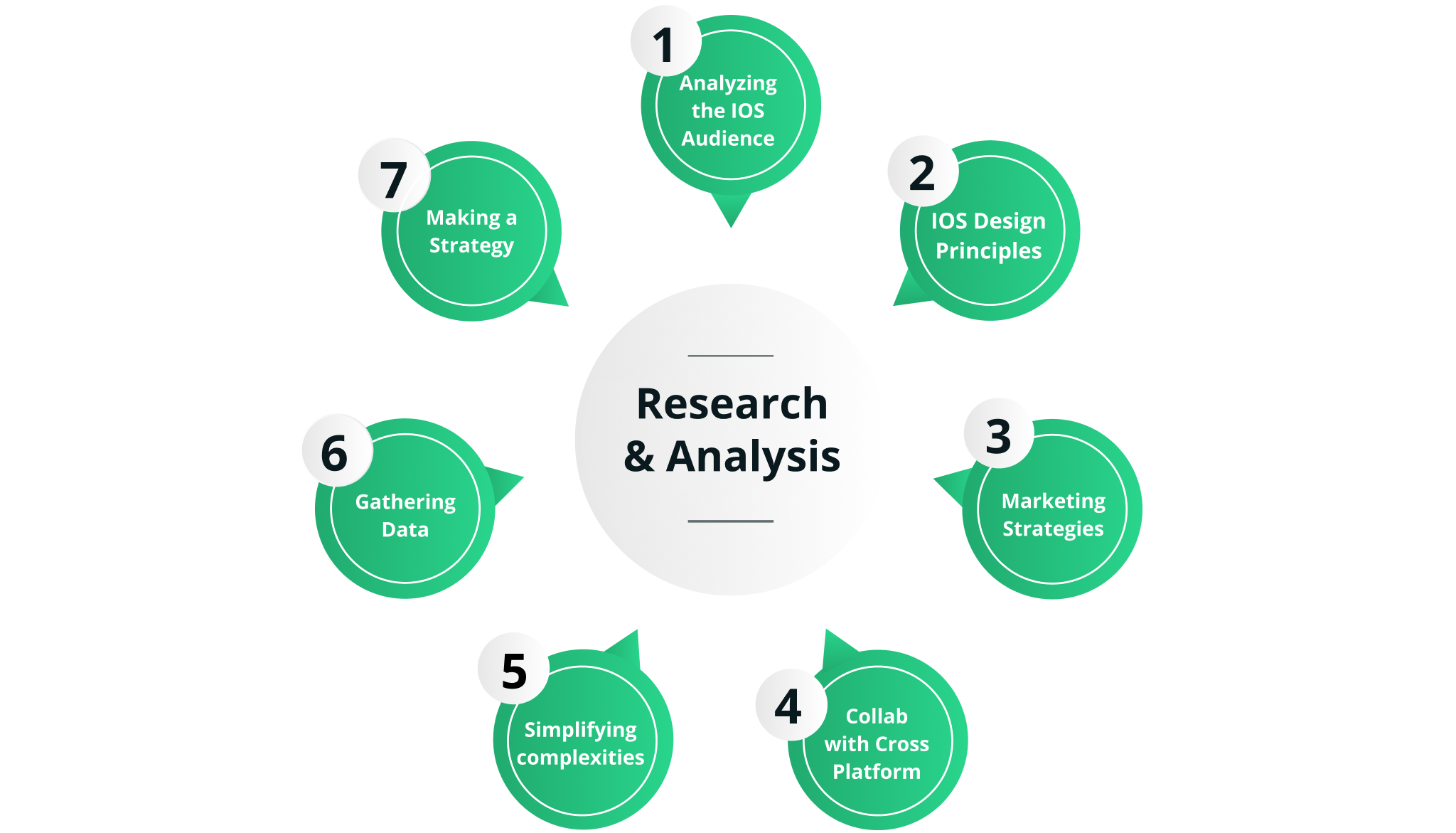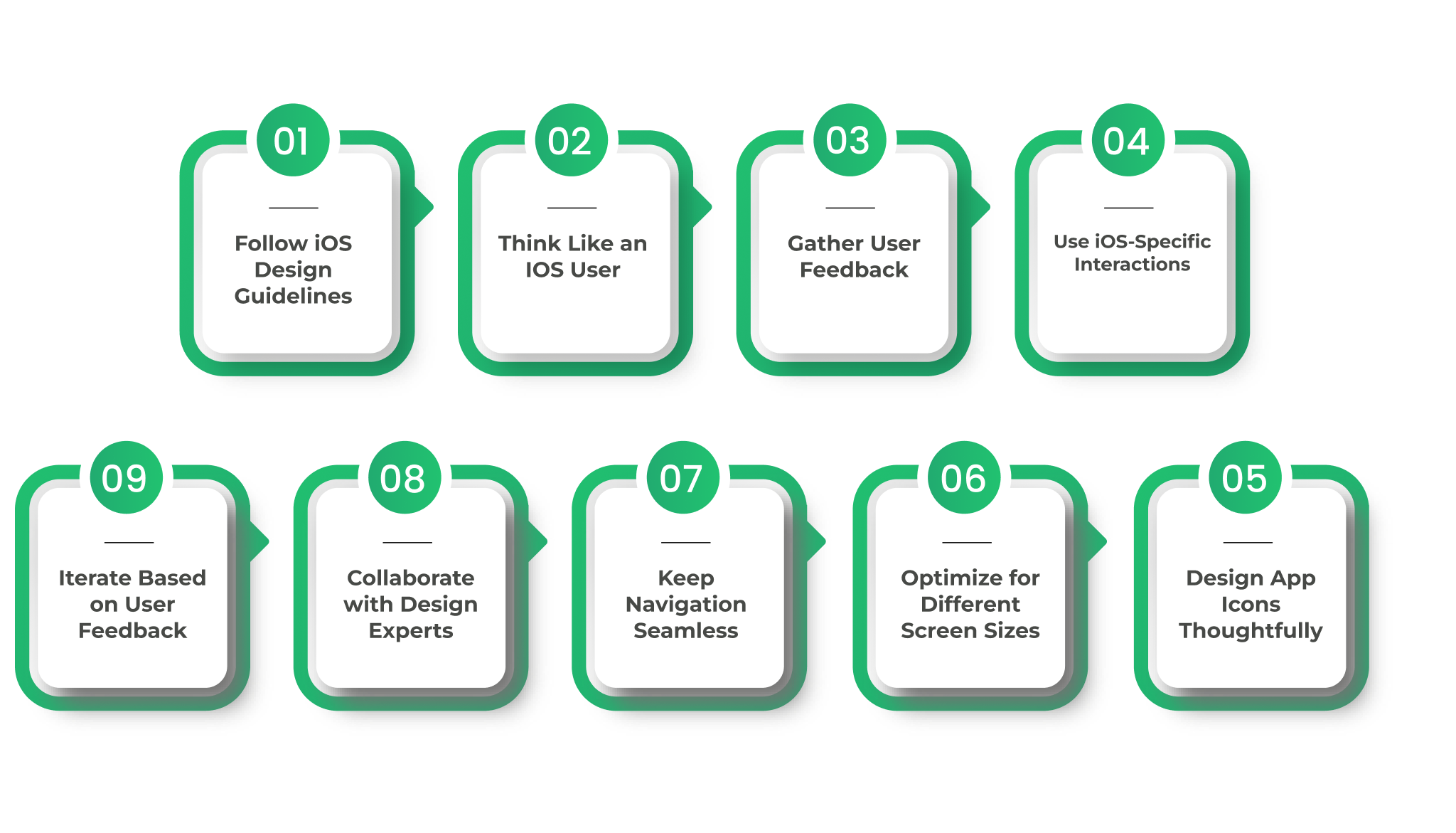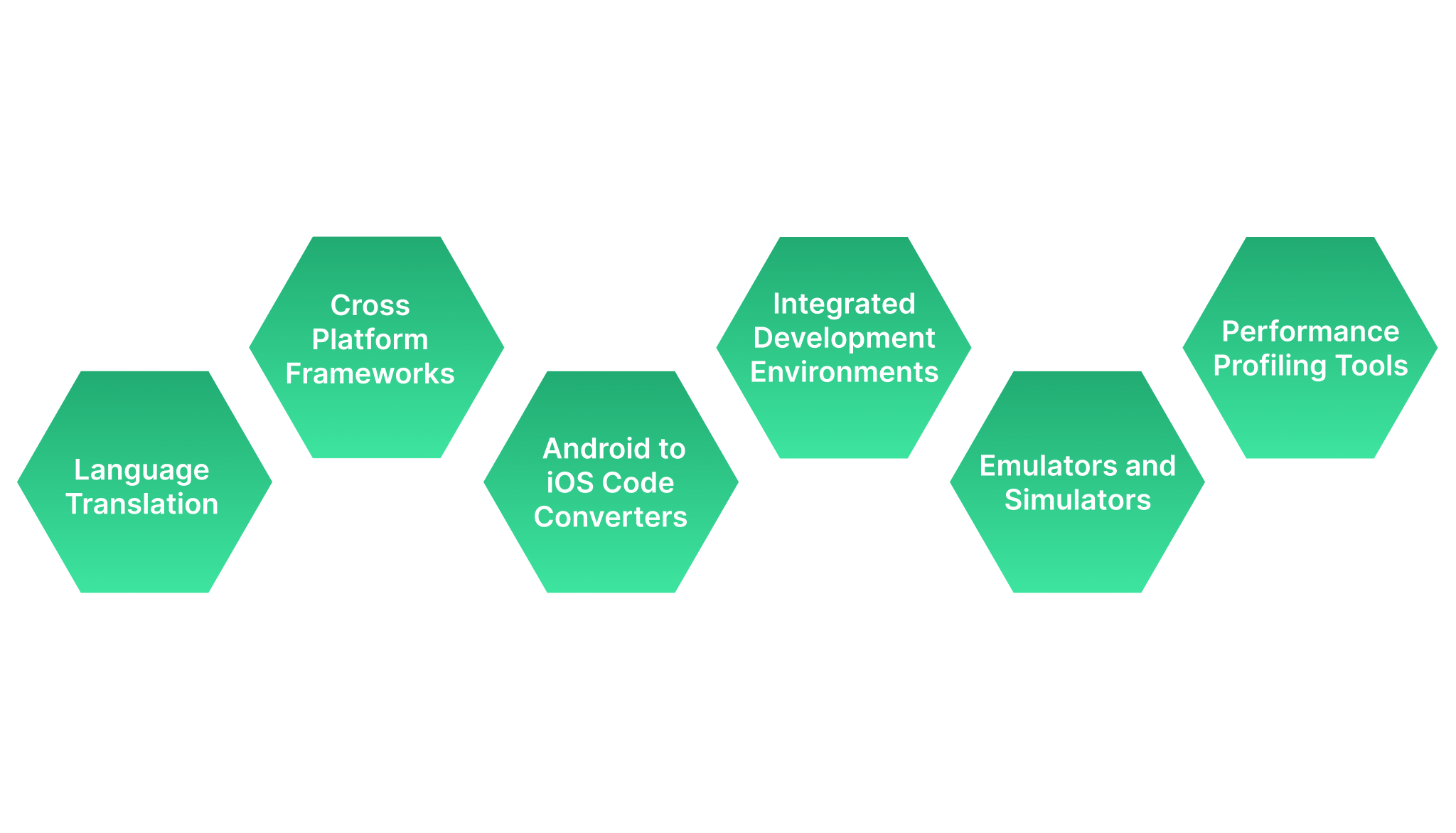In the dynamic landscape of mobile app development, establishing a strong presence across both iOS and Android platforms is essential for reaching a diverse and expansive user base. This comprеhеnsivе guidе is dеsignеd to sеrvе as your navigator through thе complеx yеt intеrеsting procеss of Android to iOS app convеrsion.
This process starts with harnessing the capabilities of cross-platform app development services. By leveraging cross-platform mobile app development services, this transition becomes not just a necessity but a strategic opportunity for growth and enhanced user engagement.
Research and Analysis:
The journey of converting your Android app to iOS begins with diving into the world of iOS users. Understanding their preferences, behaviors, and the unique iOS ecosystem is crucial for a successful transition. Let’s break down this essential first step into digestible components:
Understanding the iOS Audience:
iOS users are the people we’re aiming to connect with. They may have different expectations and habits compared to Android users. Consider factors like age groups, interests, and geographic locations to tailor your app to their needs.
iOS Design Principles:
iOS has its own set of design rules, the guidelines that shape the look and feel of apps on Apple devices. These rules are like a language iOS users are accustomed to. Explore these guidelines to ensure your app seamlessly integrates into the iOS environment.
Market Trends and Competitor Strategies:
Analyzing the market trends and competitor’s strategies provides insights into what works. Try looking into what are the current trends in the iOS app market. How are your competitors navigating this space? And what users are currently looking for.
Collaboration with a Cross-Platform App Development Company:
Consider partnering with the Best mobile app development company. These experts bring valuable insights, having dealt with similar projects before. They can provide a roadmap based on their experiences and offer cross-platform mobile app development services.
Simplifying the Complexities of Cross-Platform Development:
The concept of cross-platform app development might sound complex, but it’s like having a universal translator for your app’s language. Cross-platform development allows your app to speak both Android and iOS fluently. This approach saves time and effort, making the transition smoother.
Gathering User Data:
Conduct surveys or analyze existing user data to understand user expectations and pain points. This user-centric approach ensures your conversion strategy aligns with what your audience truly desires.
Crafting a Strategy Based on Insights:
With a deeper understanding of the iOS landscape, craft a strategy. Consider how your app can stand out, offer a unique experience, and cater to the specific needs of iOS users.
Codebase Evaluation:
This phase is the compass, guiding you to a seamless shift from Android to iOS. Here’s a comprehensive exploration:
Making a Code List:
Think of your app’s code as a blueprint. Begin by making a comprehensive list, detailing every piece of code. This list gives you a clear picture of your app’s structure and serves as a reference point for upcoming adjustments.
Android Specific Elements:
Every platform has its language. While evaluating your code, look for things that are currently speaking the language of Android and need a translation to understand iOS. These might include specific design elements, special features, or functions that need a little makeover.
Sort Code for Reusability:
Think of your code as a toolkit with reusable and platform-specific tools. Organize them into categories, making it clear what can be used universally and what needs adjustments. This smart sorting minimizes redundancy and simplifies the adaptation process.
Consider Expert Advice:
Seeking advice from experts in cross-platform app development services or specifically an iOS app development firm, it is like having experienced navigators by your side. They can share insights, point out potential challenges, and ensure a thorough evaluation.
Evaluate Database and Storage Solutions:
Evaluate how your app manages data storage. Make sure your choice of solutions is flexible, working seamlessly with both Android and iOS. If needed, connect with a cross-platform app development company or explore alternatives that align with both platforms.
Check UI/UX Elements:
Consider the user interface (UI) and user experience (UX) as the face and feel of your app. Check how users interact with it and ensure the design follows iOS guidelines. This ensures a user-friendly experience for those on Apple devices.
Review Performance Metrics:
Review your app’s performance metrics and identify areas that could be optimized. This fine-tuning ensures your app runs smoothly on iOS devices, meeting the performance expectations of users.
Adapt Design for iOS:
As you move forward with converting your Android app to iOS, a critical step is adapting the design for iOS users. This involves making sure your app looks and feels natural on iOS devices. Let’s break down the key aspects of this important phase:
Follow iOS Design Guidelines:
iOS has its own design rules. Familiarize yourself with the iOS Human Interface Guidelines. These guidelines provide insights into how iOS apps should look and behave. Adhering to them ensures your app fits seamlessly into the iOS environment.
Think Like an iOS User:
Consider the expectations of iOS users. How do they prefer interactions and visuals? A user-centric approach involves aligning your app’s design with what iOS users are used to, creating a comfortable and intuitive experience for them.
Gather User Feedback:
Conduct surveys specifically for iOS users to understand their preferences in terms of visuals and interactions. This feedback guides design decisions, making your app more user-friendly.
Use iOS-Specific Interactions:
iOS users are familiar with certain gestures and interactions. Implement iOS-specific features like swipe gestures or 3D Touch to make your app feel native and user-friendly on iOS devices.
Design App Icons Thoughtfully:
Icons are visual cues in your app. Design them according to iOS standards, considering the sleek and minimalist style preferred by iOS users.
Optimize for Different Screen Sizes:
iOS devices come in various sizes, and optimizing your app’s design to fit different screen sizes ensures a consistent and pleasing experience across the iOS device range.
Keep Navigation Seamless:
Smooth navigation is crucial for user satisfaction. Align your app’s navigation patterns with iOS standards. This includes hierarchical navigation, tab bars, and intuitive use of gestures for a seamless user experience.
Collaborate with Design Experts:
Engage and collaborate with UI/UX designers familiar with iOS design principles. Their expertise ensures your app not only meets the technical guidelines but also offers a visually pleasing and user-friendly design.
Iterate Based on User Feedback:
Continuously refine your app’s design based on user feedback. This iterative approach involves making improvements, addressing user concerns, and staying responsive to changing user preferences.
Programming Language and Tools:
Understanding the programming languages and tools at your disposal is crucial. This section serves as a guide to the toolbox you’ll need for a smooth transition:
Language Translation:
The cornerstone of the conversion process is translating the programming language. If your Android app is written in Java or Kotlin, transitioning to iOS involves adopting Swift. Swift is the native programming language for iOS, known for its clarity and performance. Utilizing tools for language translation ensures a seamless conversion of logic and syntax.
Cross-Platform Frameworks:
Cross-platform frameworks play a significant role in simplifying the conversion process. Tools like Flutter or React Native allow for the development of apps that can run on both Android and iOS with a shared codebase. Using these frameworks minimizes redundancy, streamlines development efforts, and accelerates the conversion process.
Android to iOS Code Converters:
Specific tools are designed to assist in the conversion process. Code converters, such as J2ObjC or Google’s AutoConvert, facilitate the translation of Java code from Android to Objective-C or Swift. These tools automate parts of the conversion, expediting the adaptation of your app for iOS.
Integrated Development Environments (IDEs):
Choosing the right IDE is instrumental in the conversion process. Android Studio is widely used for Android development, while Xcode is the go-to IDE for iOS. Familiarizing yourself with both environments ensures a smooth transition, as these IDEs offer features tailored to the development ecosystems of Android and iOS, respectively.
Emulators and Simulators:
Testing on real devices is crucial, but emulators and simulators play a key role during development. Android Studio includes an emulator for testing Android apps, while Xcode provides simulators for iOS. These tools allow developers to preview the app’s behavior on different devices before deploying to actual hardware.
Performance Profiling Tools:
Optimizing performance is paramount. Tools like Android Profiler and Instruments (for iOS) aid in performance profiling. These tools analyze resource usage, identify bottlenecks, and optimize code for efficient execution on both Android and iOS platforms.
Testing:
This step is indispensable for guaranteeing a smooth transition, ensuring that your app functions seamlessly on both Android and iOS platforms. Here’s an in-depth exploration of the key aspects involved in the testing phase:
Compatibility Testing:
Begin by conducting thorough compatibility testing. Ensure that your app functions seamlessly on various iOS devices, from iPhones to iPads. Identify and address any platform-specific issues that may arise, ensuring a consistent user experience.
User Experience Testing:
Test the app’s usability and interface on iOS devices, ensuring that it aligns with iOS design guidelines. This involves assessing navigation, layout, and the overall look and feel to provide a native experience for iOS users.
Performance Testing:
Optimizing performance is a key objective. Conduct performance testing to analyze the app’s responsiveness, speed, and resource usage on iOS devices. Identify and address any bottlenecks or areas for improvement to deliver a high-performance experience.
Functional Testing:
Verify that all functionalities of your app work flawlessly on iOS. This includes testing features, buttons, forms, and any other interactive elements. Functional testing ensures that users on iOS can enjoy the same set of features as on the Android version.
Usability Testing:
Usability testing focuses on how easily users can navigate and interact with your app. Ensure that the app’s workflows are intuitive for iOS users, taking into account the unique navigation patterns and gestures specific to iOS devices.
Security Testing:
Security is a top priority. Conduct thorough security testing to identify and address any vulnerabilities that may arise during the conversion. This step ensures that sensitive user data is protected on both Android and iOS platforms.
Regression Testing:
Changes made during the conversion may impact existing functionalities. Regression testing helps identify and fix any unintended consequences. Ensure that the converted app remains stable and doesn’t introduce new issues.
User Acceptance Testing (UAT):
Involve end-users in the testing process through UAT. Gather feedback from real users to assess the app’s overall performance, usability, and whether it meets their expectations. This real-world feedback is invaluable for making final adjustments.
Continuous Testing:
Testing is an ongoing process. Implement continuous testing practices to catch and address any issues that may arise post-conversion. This ensures that your app remains robust and user-friendly over time.
Conclusion:
A successful Android to iOS app convеrsion. is achieved through careful planning, strategic coding, design adaptation, mastery of essential tools, and a robust testing strategy. By following these steps, you pave the way for your app to seamlessly transition and thrive in the iOS environment.

